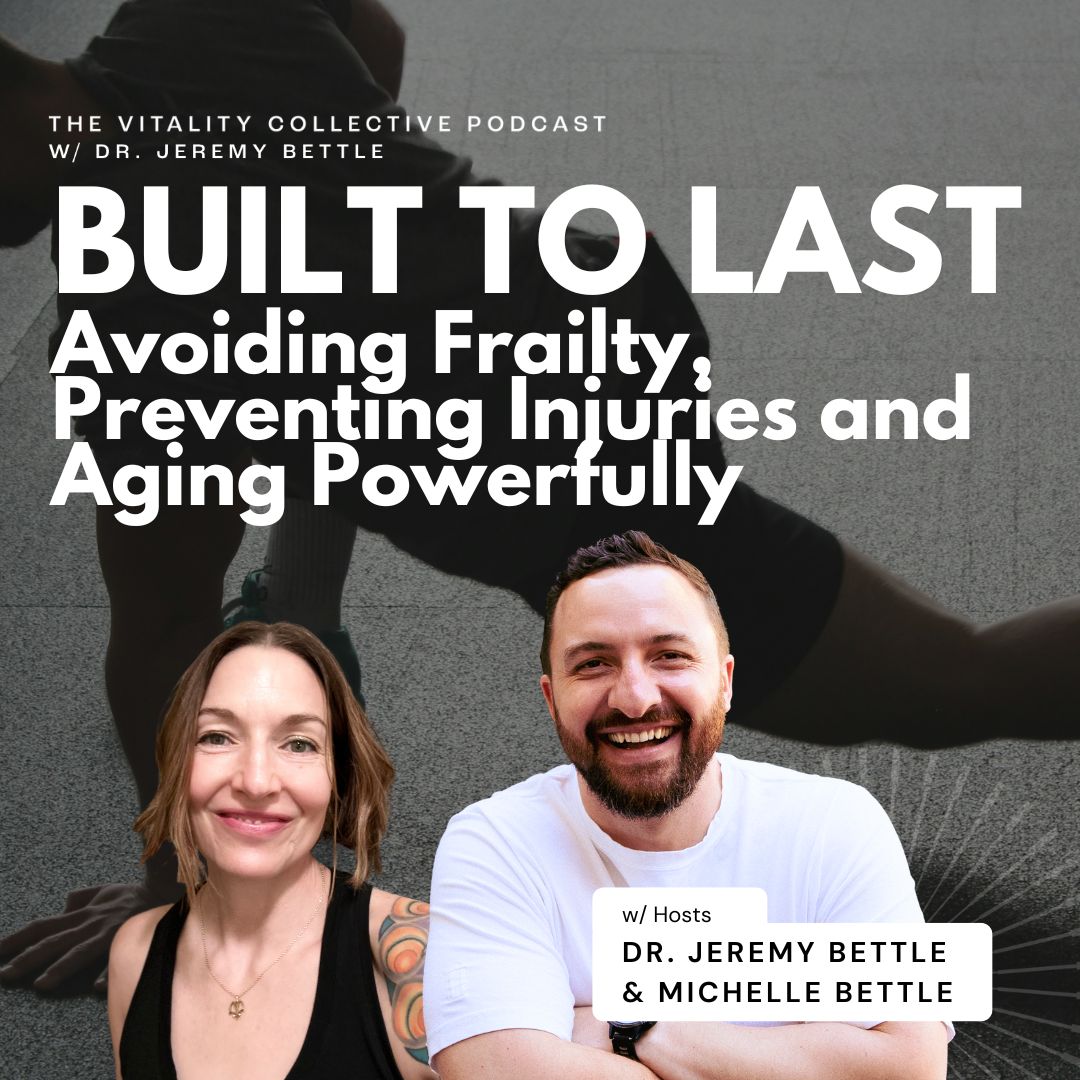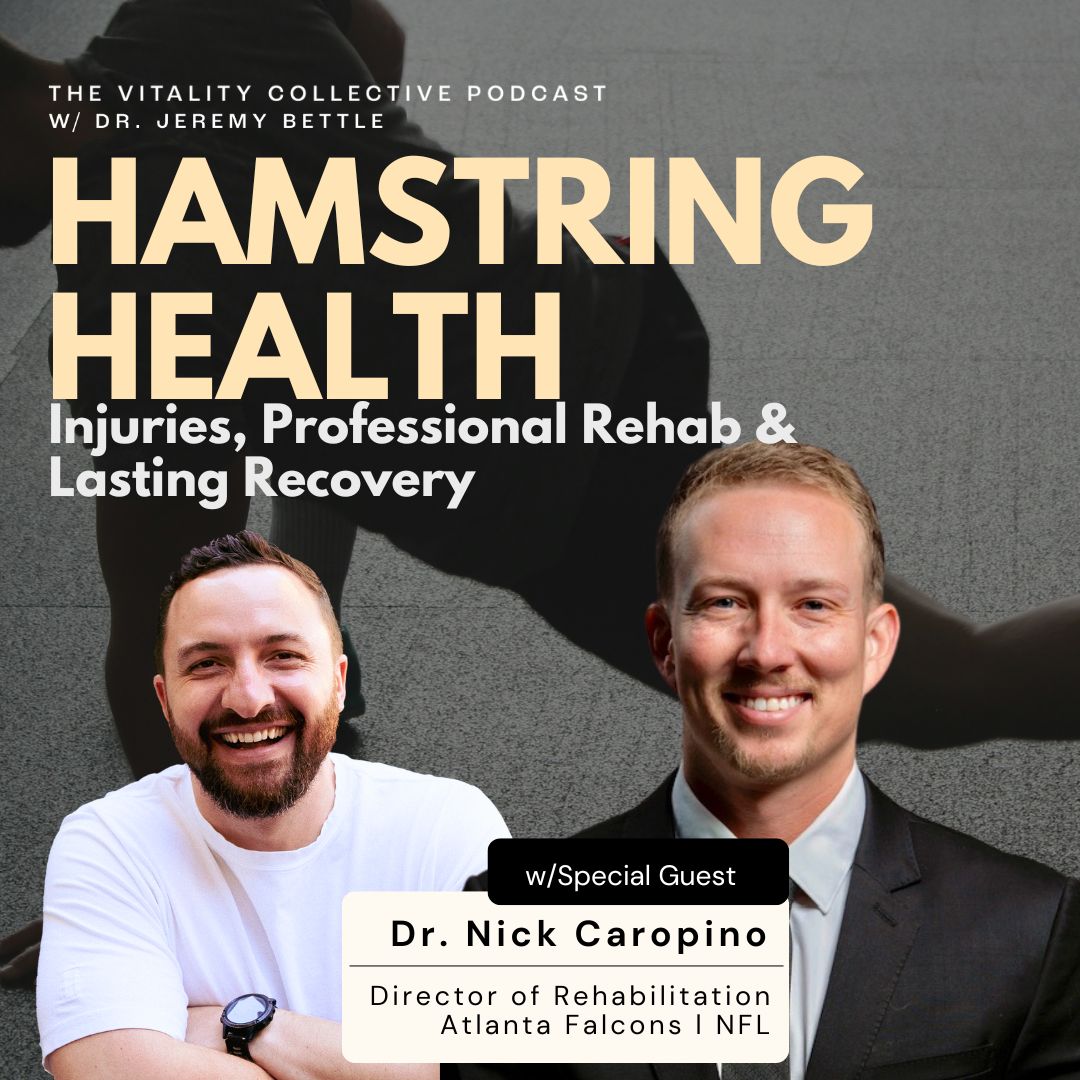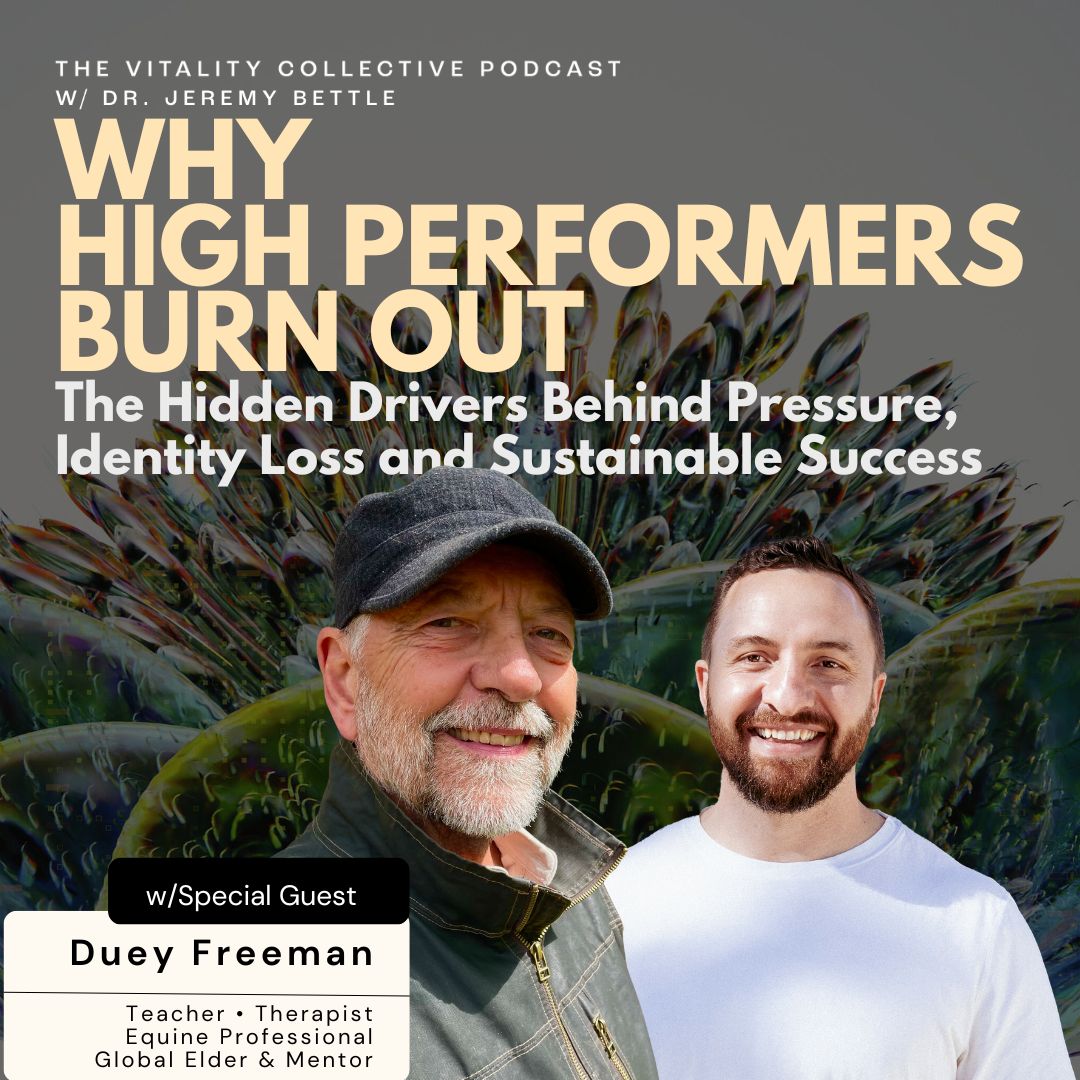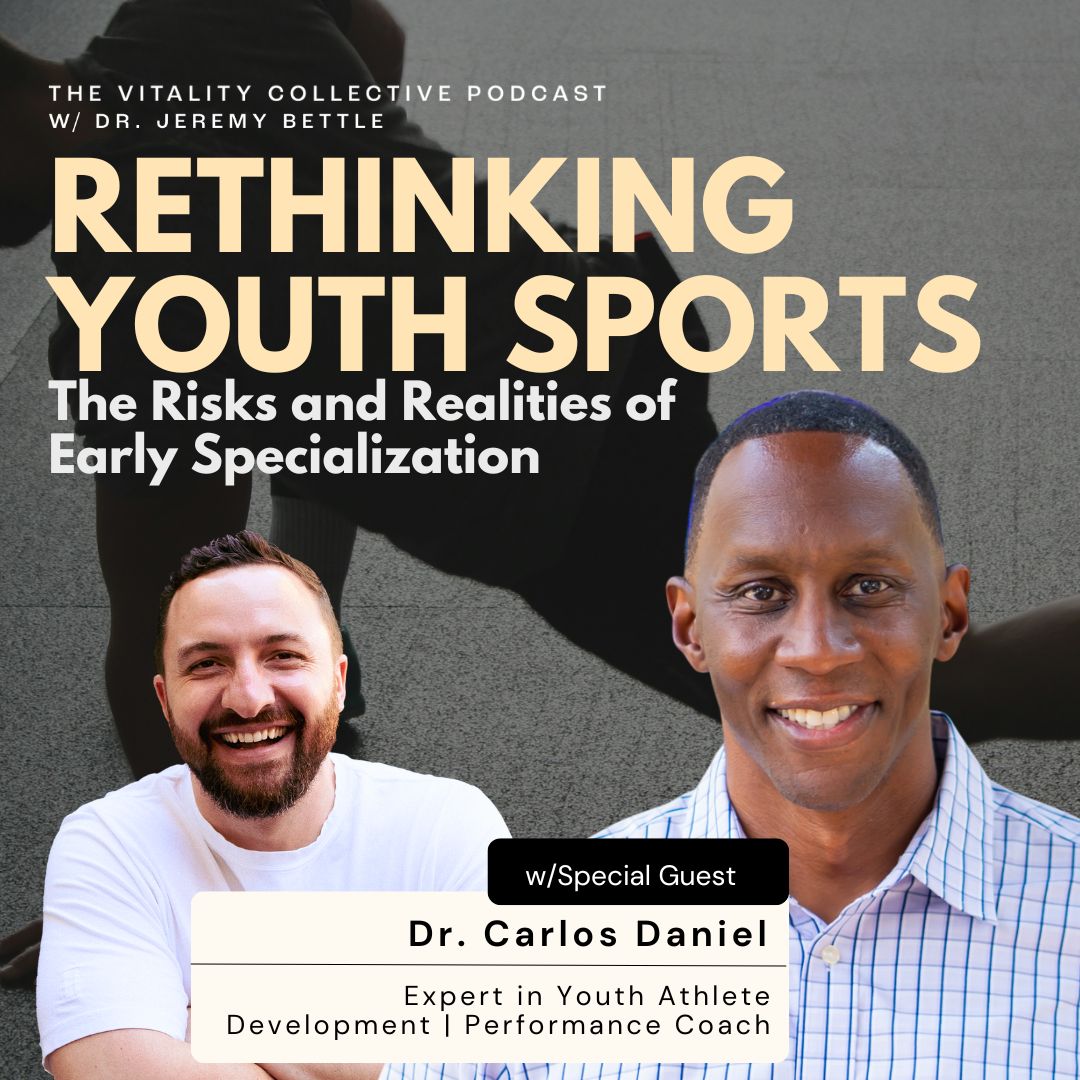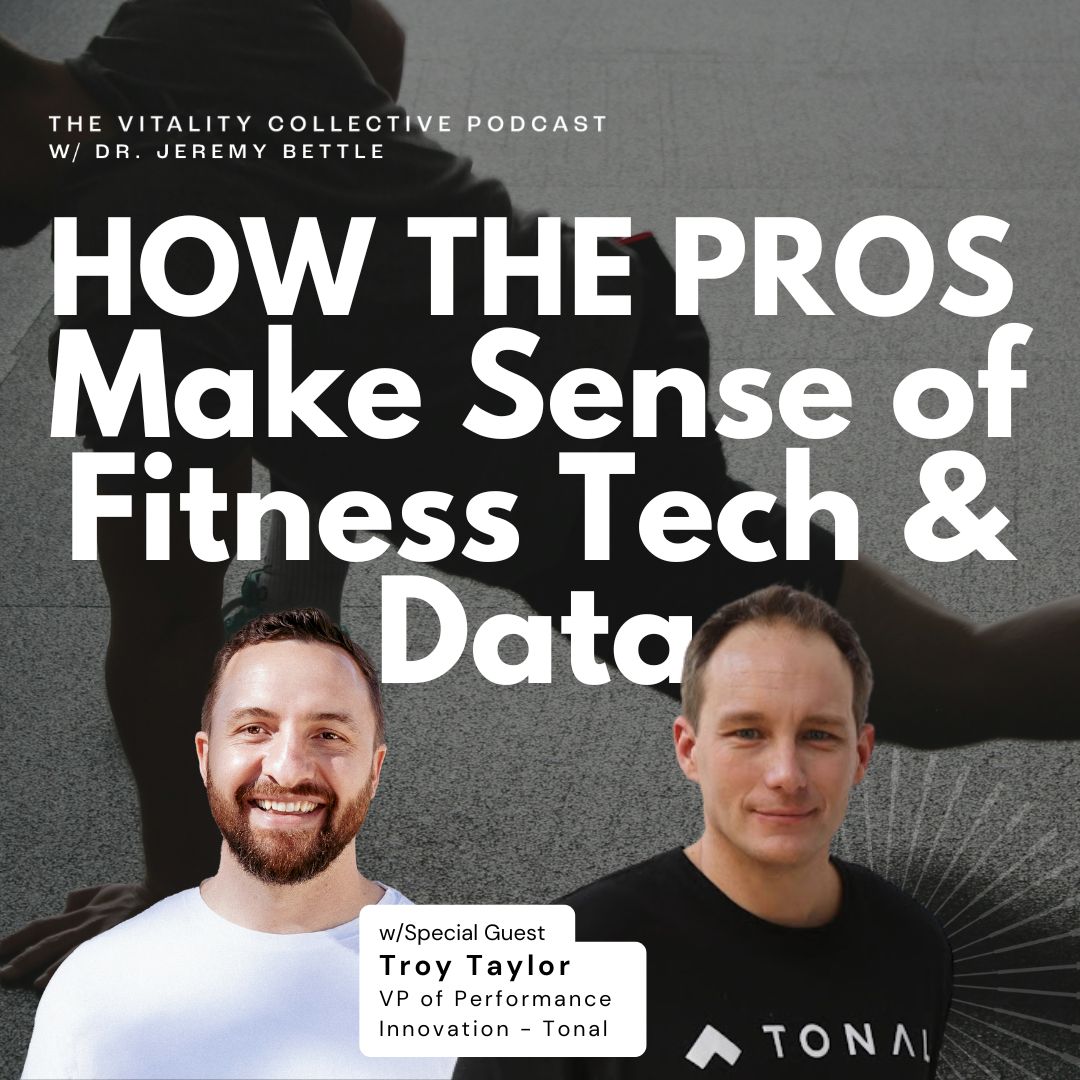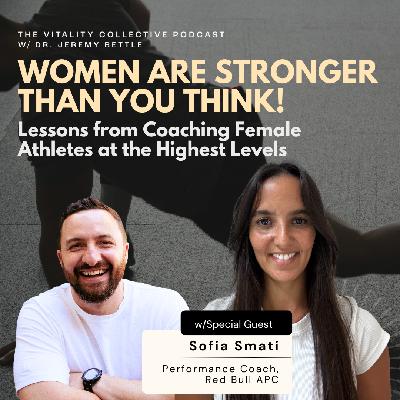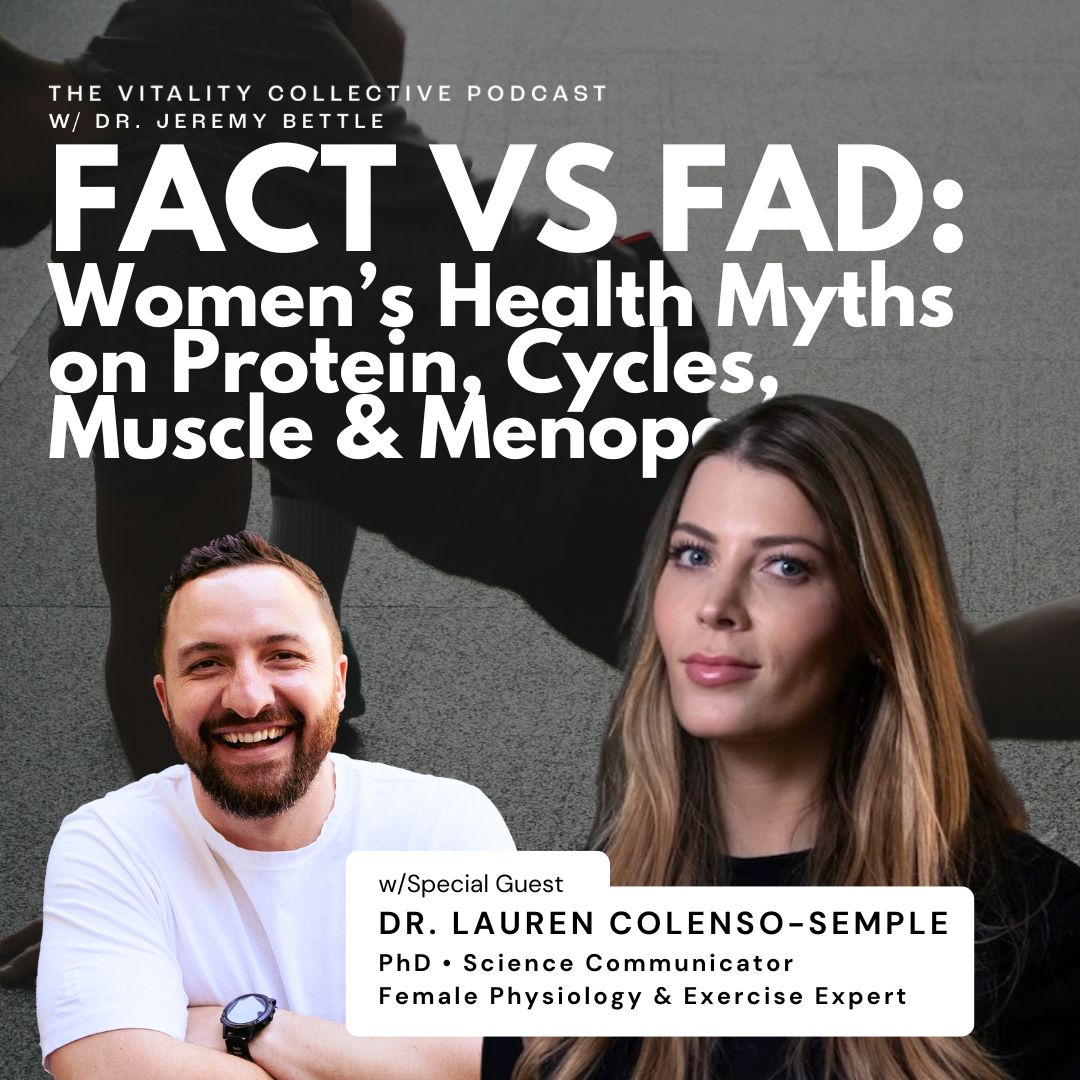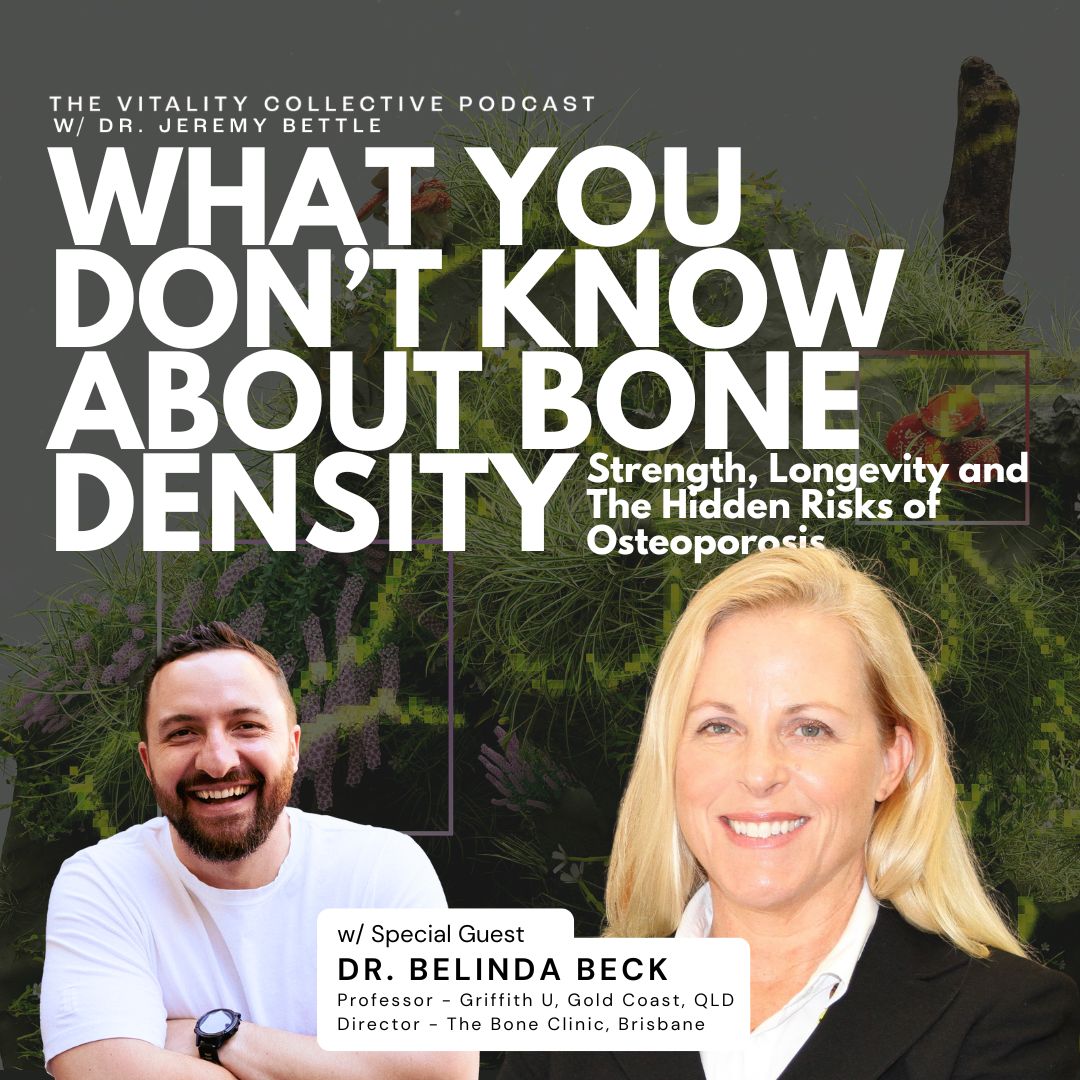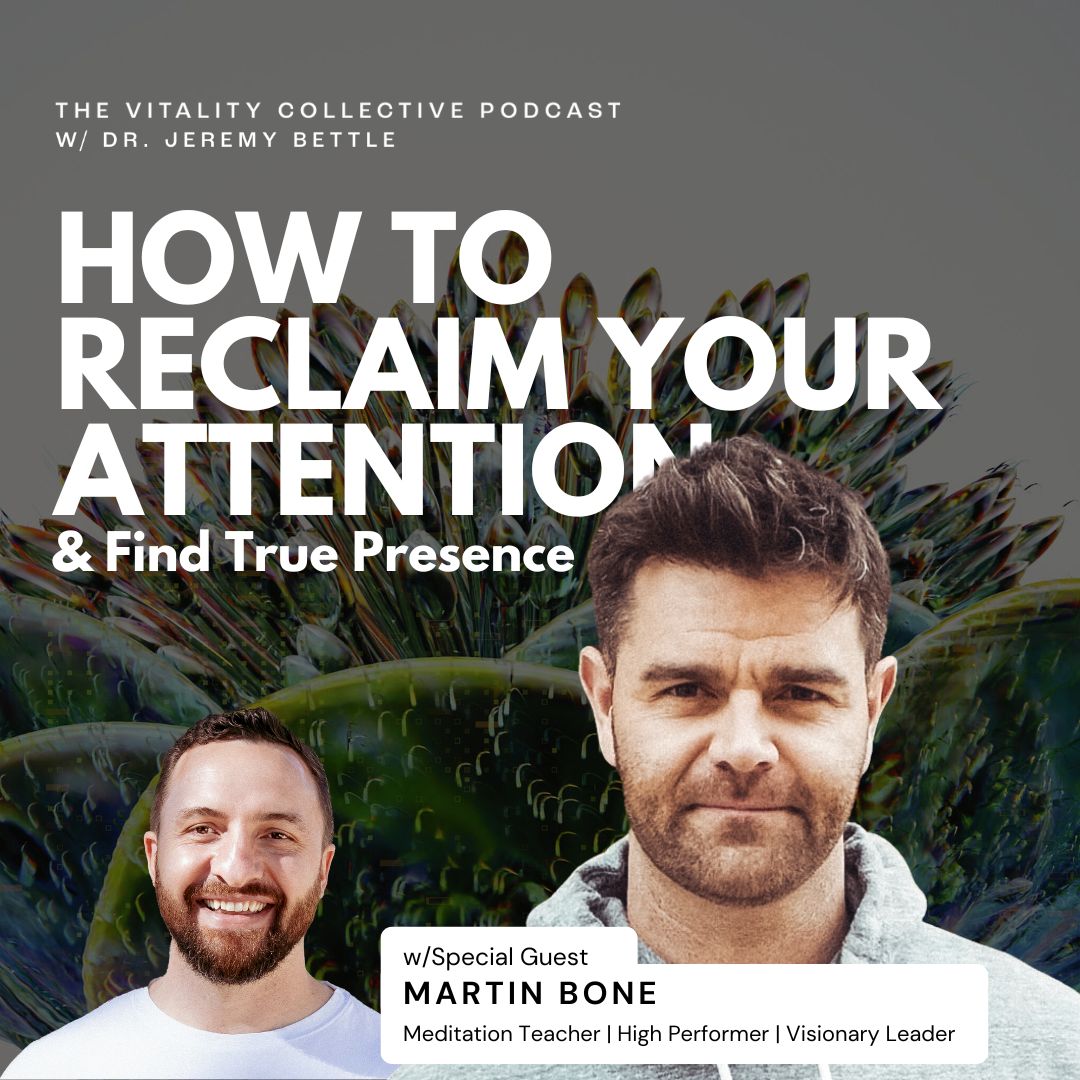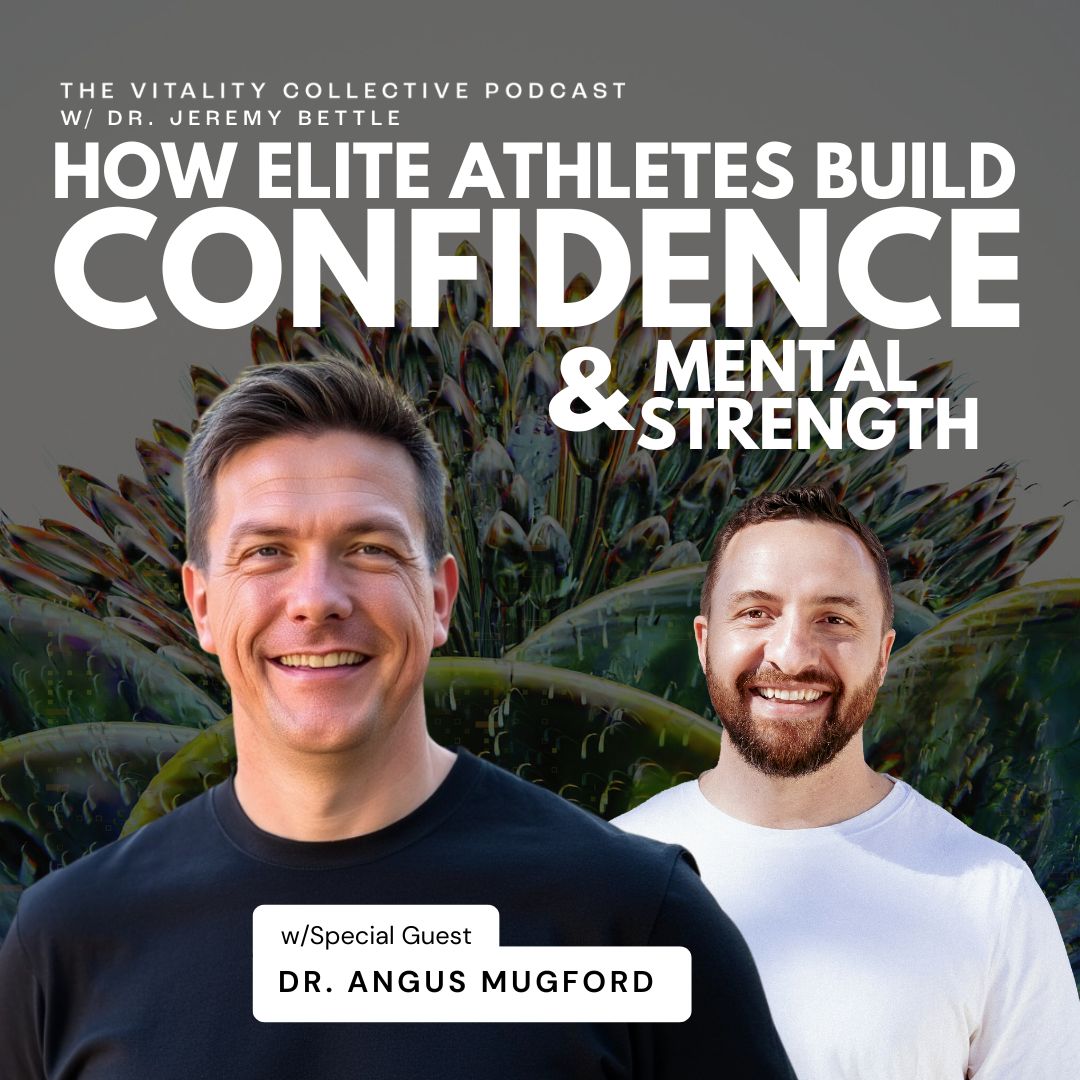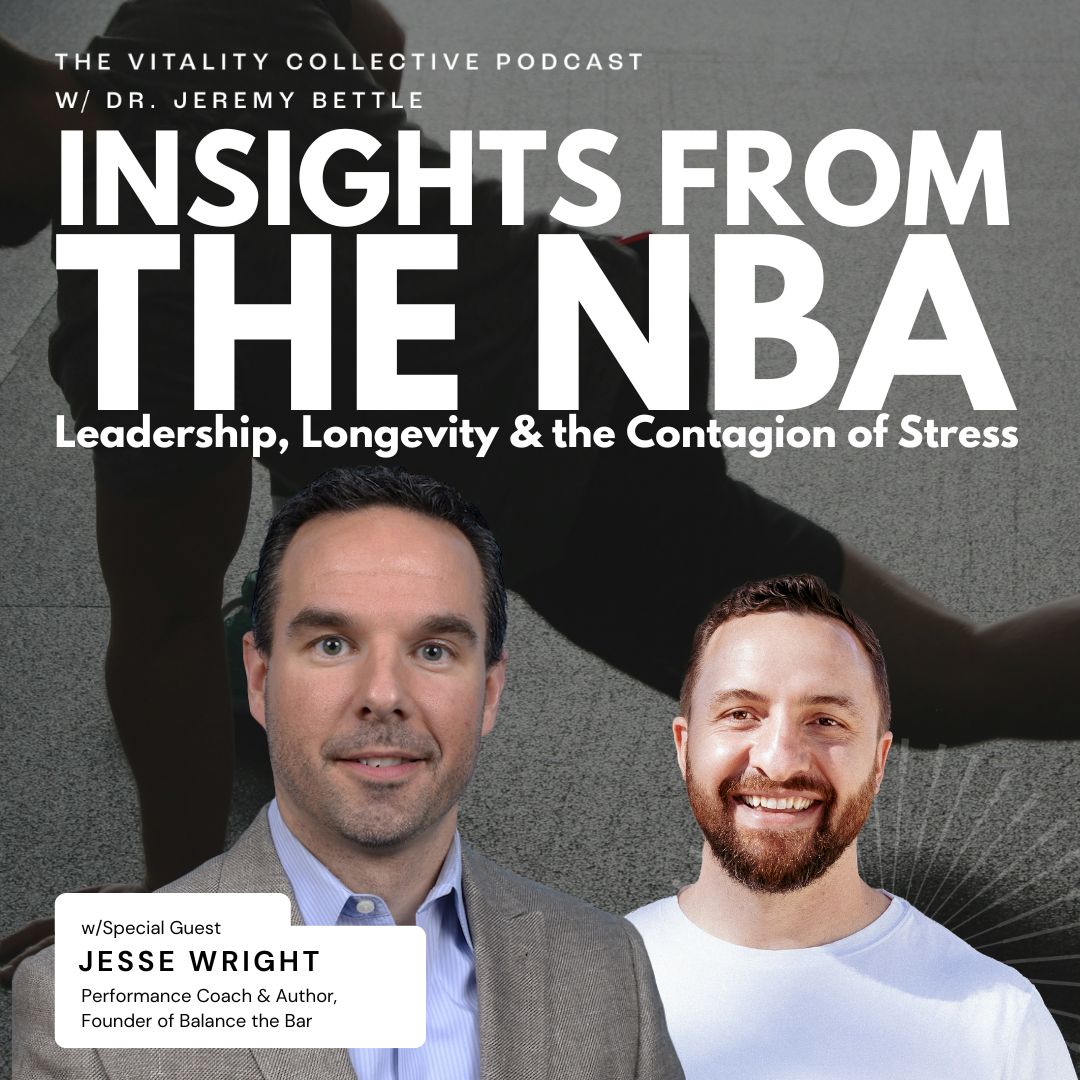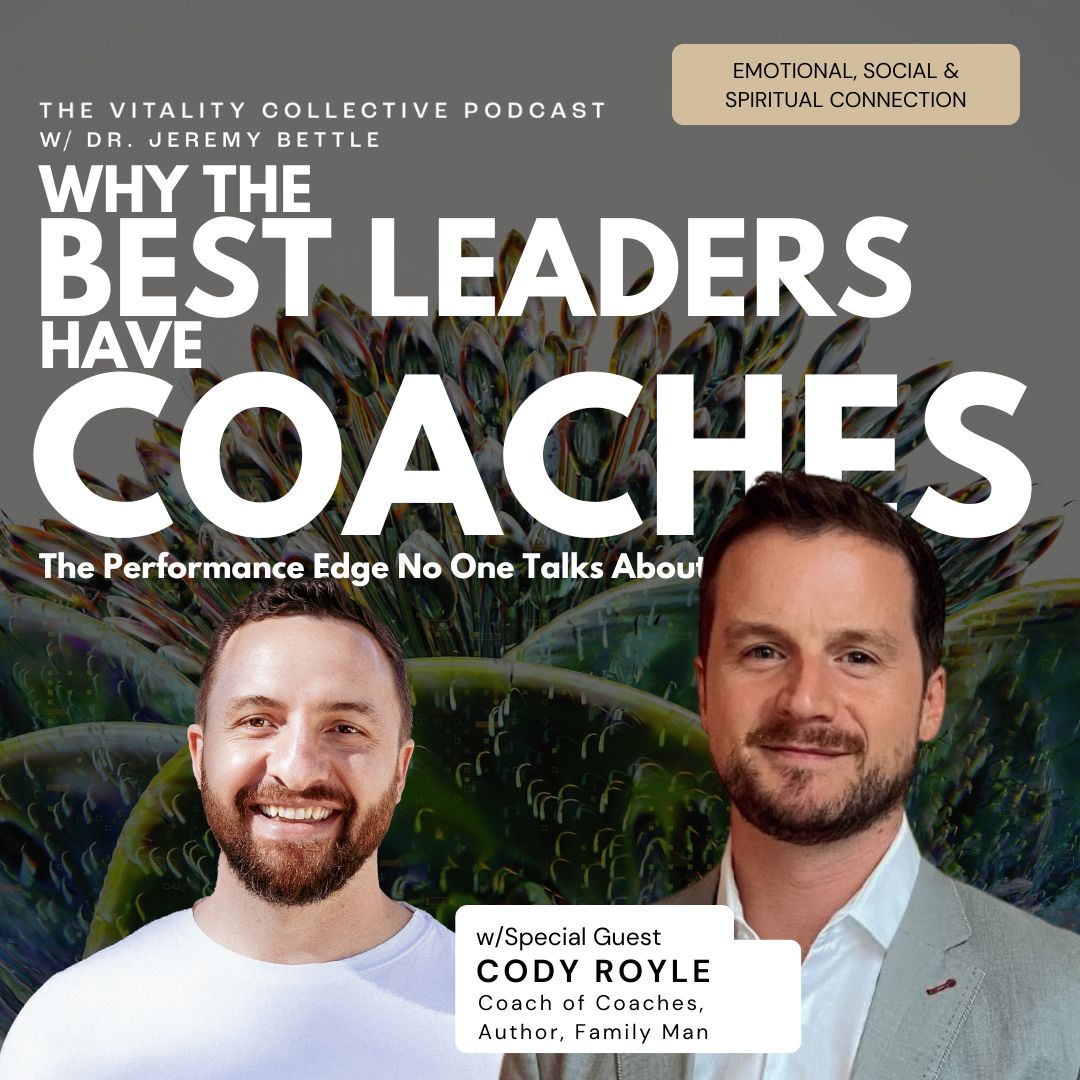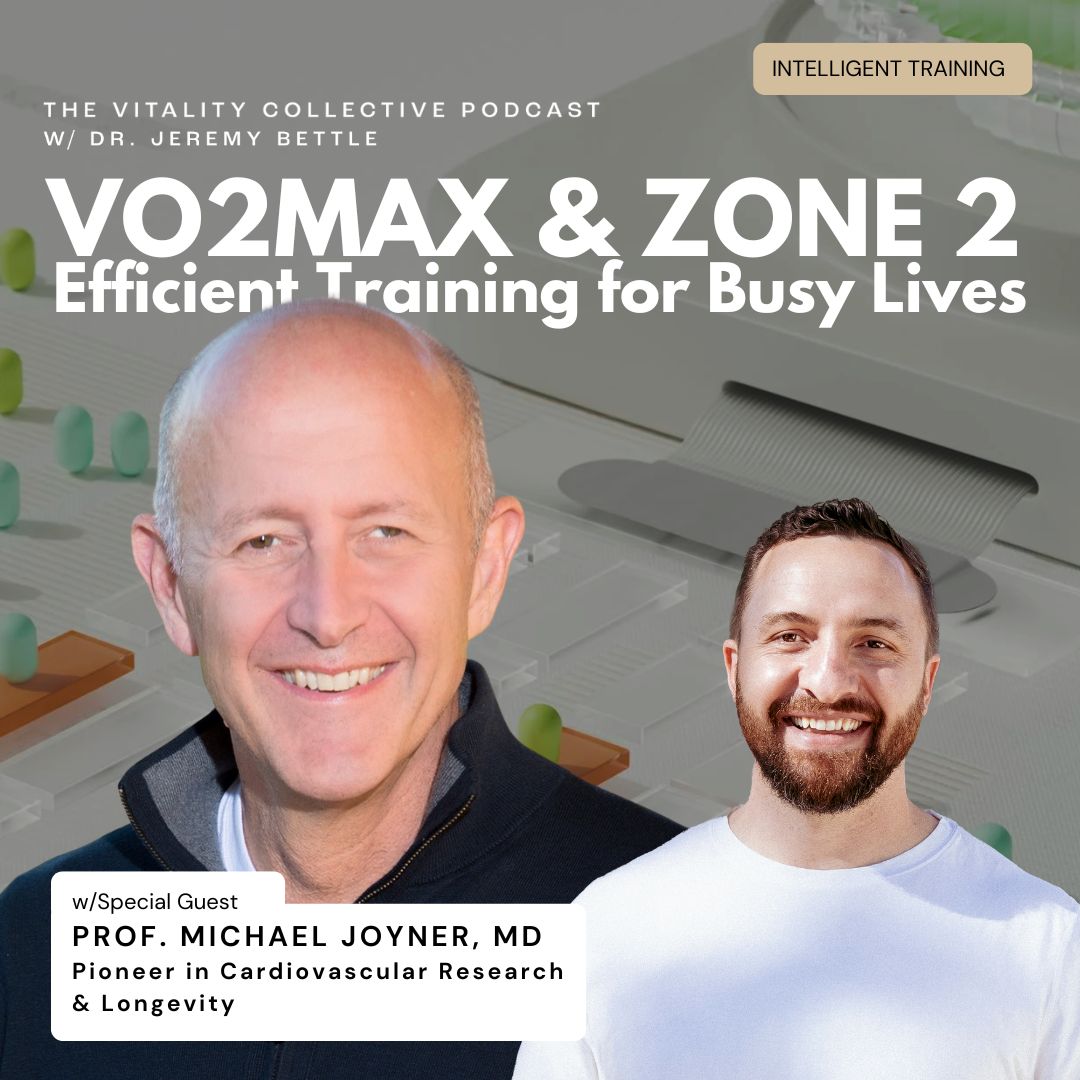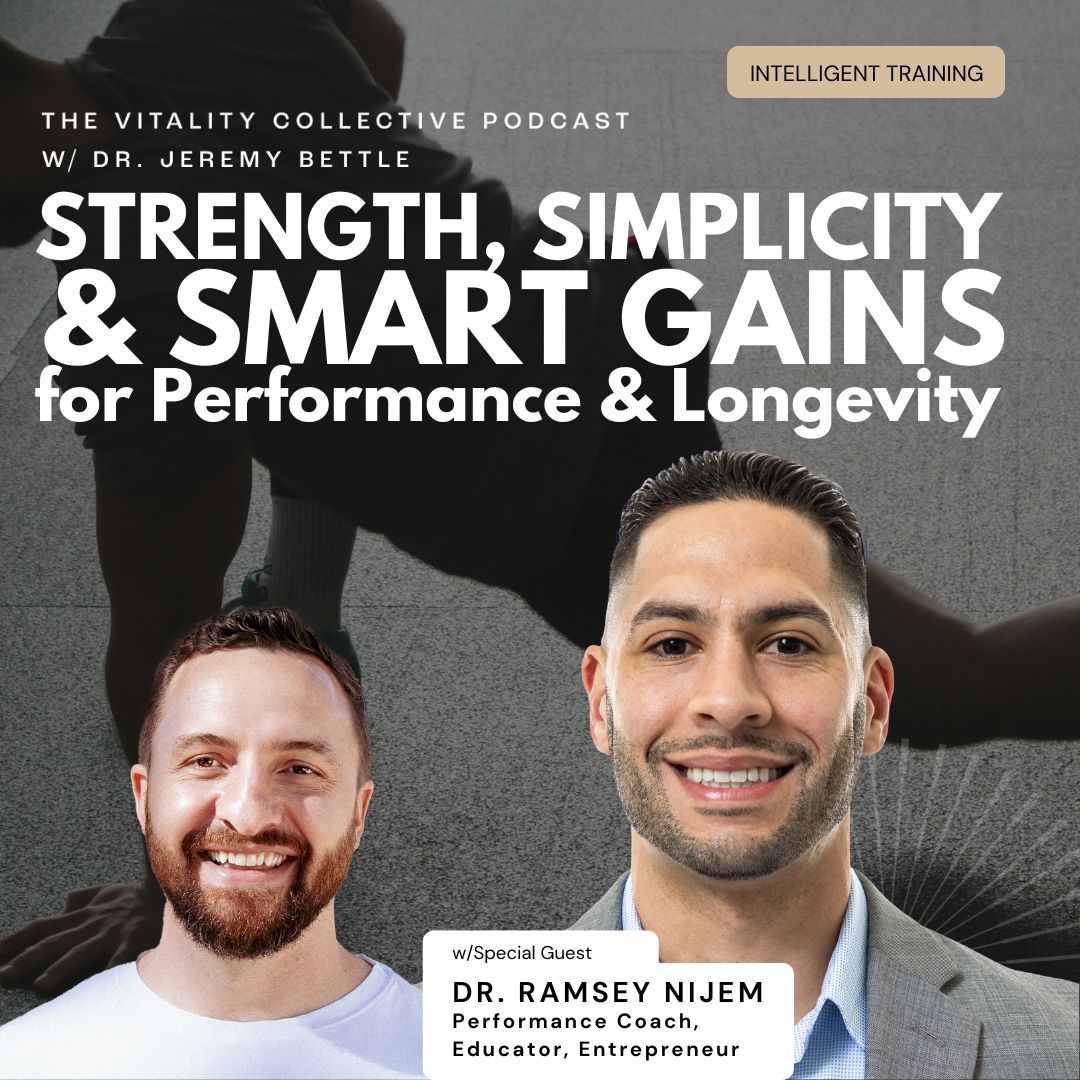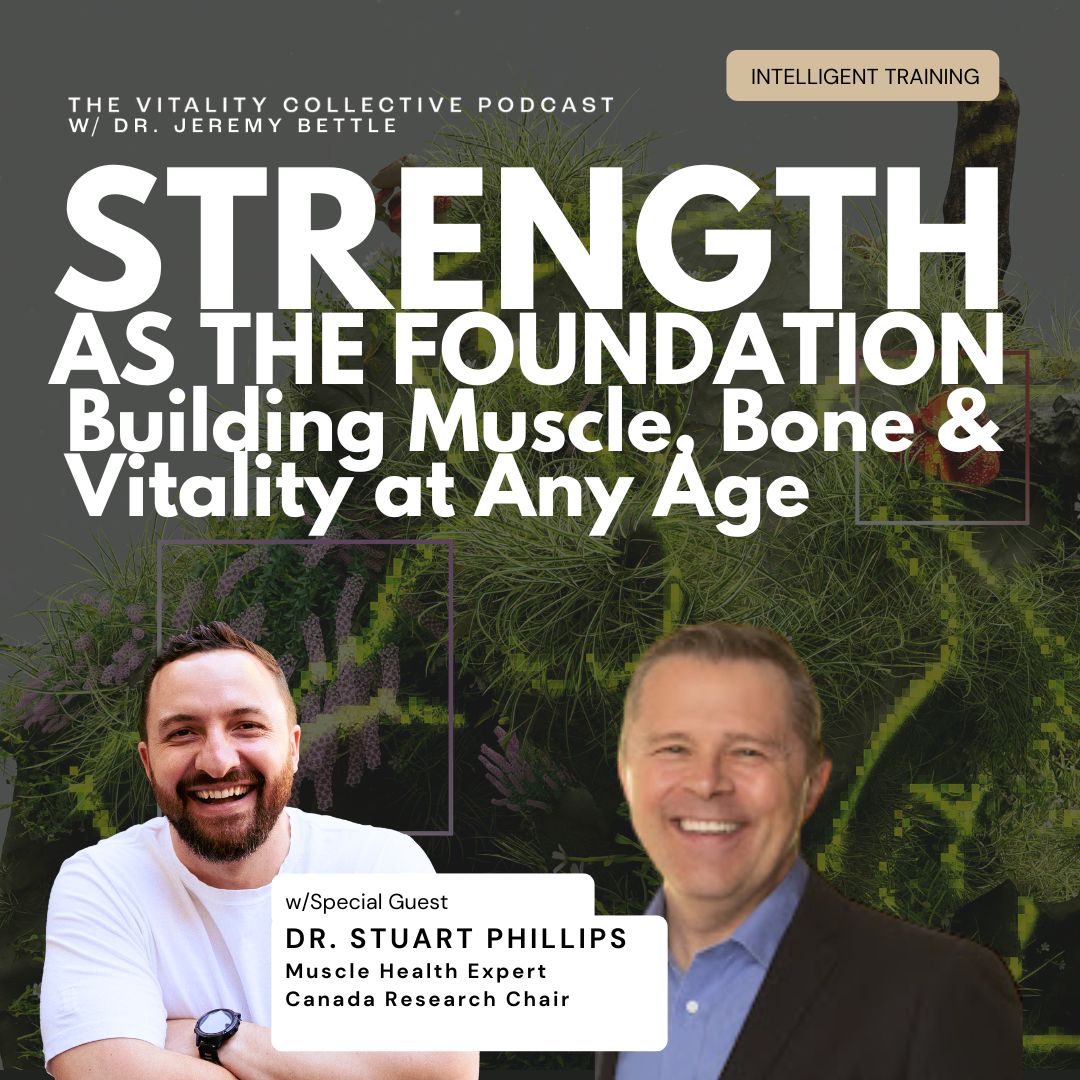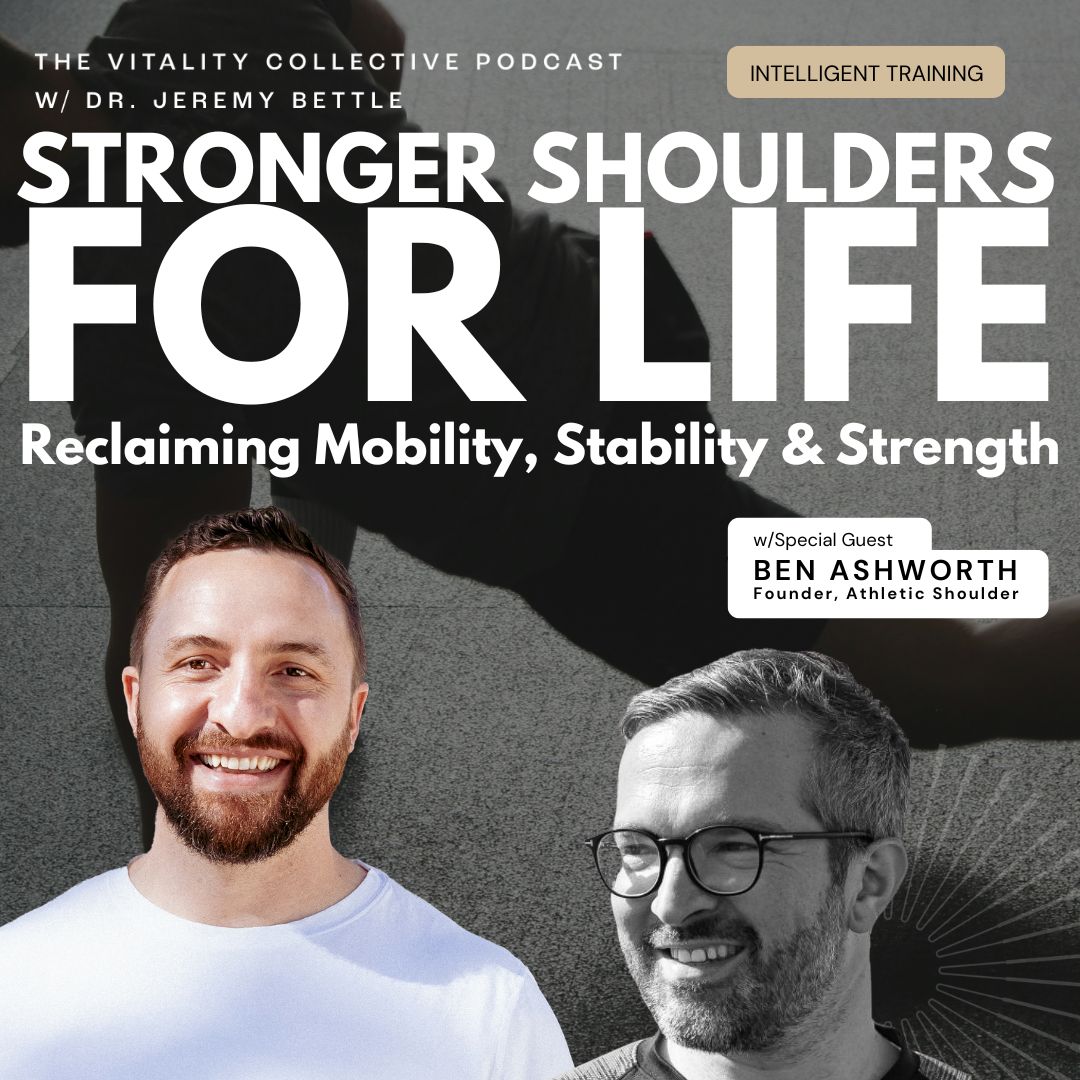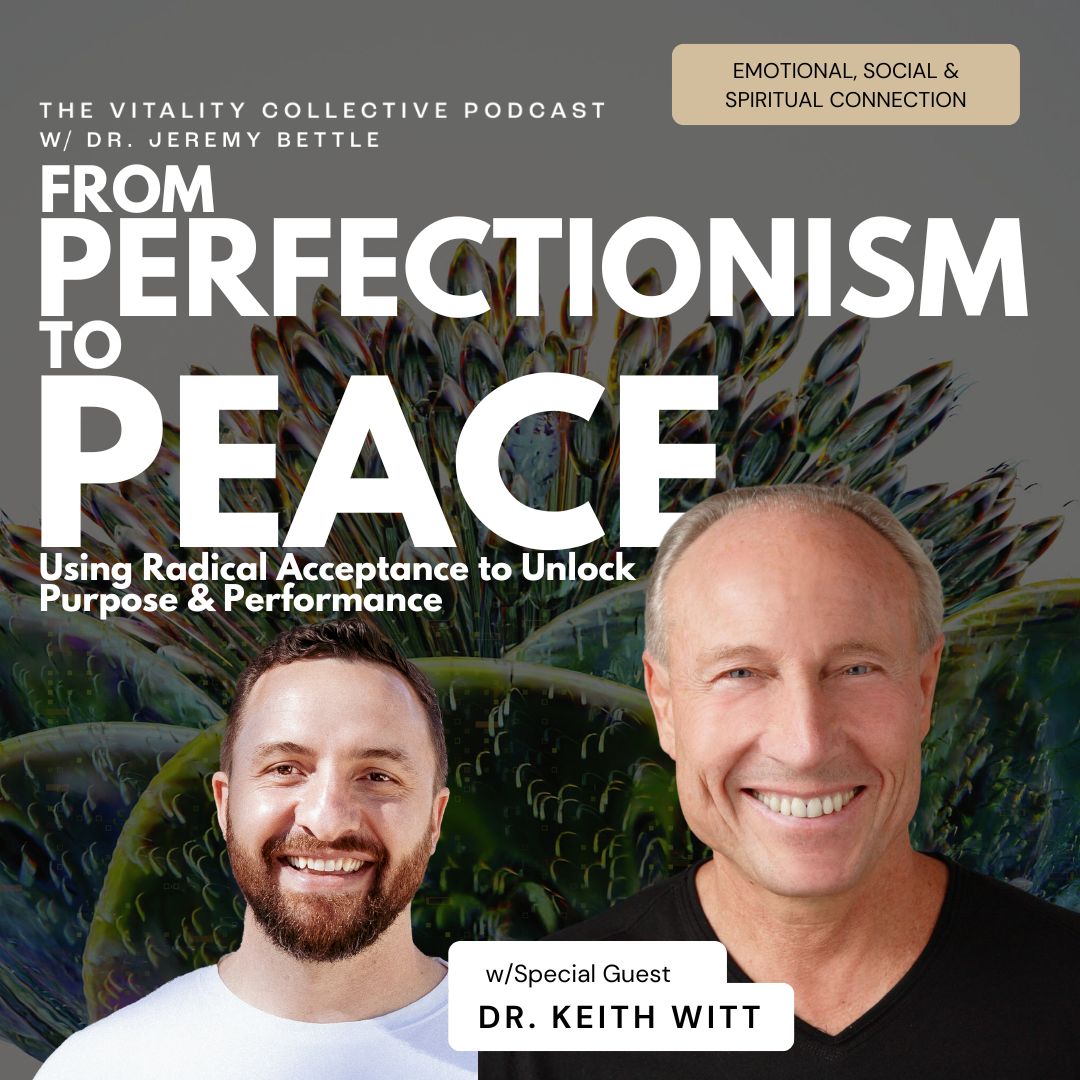EP 33: Built To Last: Avoiding Frailty, Preventing Injuries, and Aging Powerfully
Description
Episode Summary
In this episode, Jeremy and Michelle break down the principles of injury prevention and why avoiding frailty should be the top priority for anyone seeking long-term vitality. Drawing from Jeremy’s decades in professional sports, they connect elite athlete injury-prevention systems to everyday life—whether that’s playing pickleball, sitting at a desk, or managing bone health in your 80s. The conversation covers how to assess your current capacity, prepare for the demands of your activities, and avoid common pitfalls caused by trendy but risky training advice.
Links
Instagram: @vitalitycollectiveperformance
LinkedIn: @vitalitycollective
Episode 27 with Dr. Ramsey Nijem
Exact Three Actionable Takeaways
-
“Understand where you are relative to what you want to be able to do.” In other words, assess your current capacity honestly so you can train for the demands you’ll face without setting yourself up for injury.
-
“Don’t push through pain.” Pain is a signal, not a challenge—address it early so you can make lasting progress instead of creating setbacks.
-
“Keep going. Just move. Do the things you love to do.” Staying active in ways you enjoy builds both physical resilience and a strong community around you.
Key Takeaways
-
Injury prevention starts with matching your physical capacity to the demands of your activity.
-
Avoiding frailty should be the number one longevity goal, as it keeps you active and able to participate in what you love.
-
Many injuries are predictable and preventable when you track capacity and risk factors throughout the year.
-
Everyday people face the same movement demands as athletes, just at different levels of intensity.
-
Sitting for long periods can cause significant musculoskeletal issues, requiring targeted preparation and training.
-
A clear care spectrum—from physician to PT to performance coach—ensures safe and effective progression.
-
Bone density improvements require a progressive approach, not jumping immediately to high-risk training like heavy plyometrics.
-
Progression for older adults should be deliberate, moving from pain reduction to strength work to landing and jump training.
-
The most effective training principles—strength, power, mobility—apply across all sports and ages.
-
Beware of absolute, one-size-fits-all fitness advice; personal context and gradual progression matter most.

